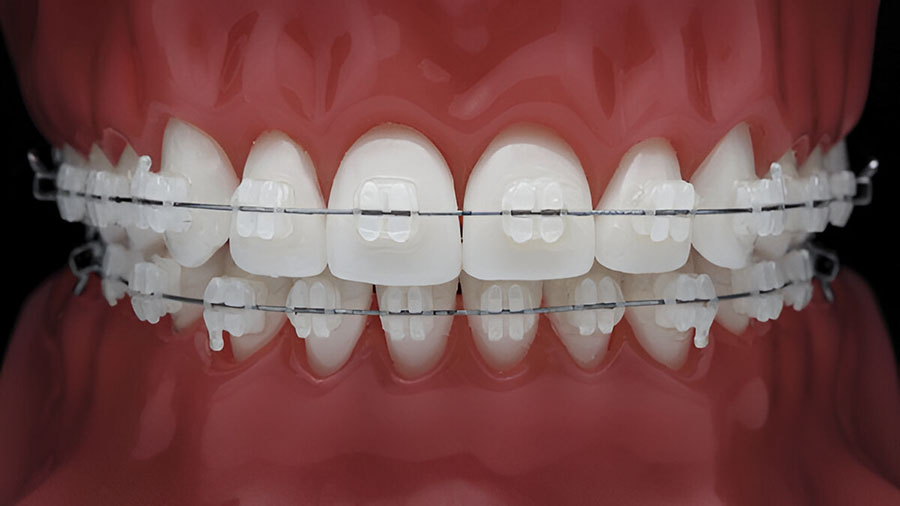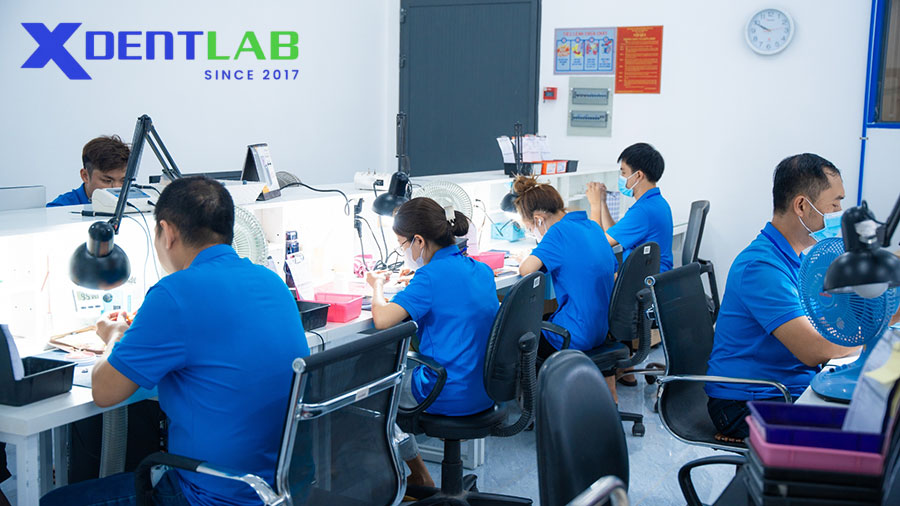Zirconia brackets combine strength, aesthetics, and biocompatibility in orthodontics. Learn about their benefits, limitations, and advancements in 3D printing technology.

Table of contents [Show]
- Zirconia Brackets in Ceramic Orthodontics
- Development and Research History
- Mechanical Properties
- Dimensional Accuracy and Manufacturing
- Friction Characteristics
- Hardness and Material Properties
- Optical Properties
- Clinical Performance Comparison
- 3D Printing Technology in Zirconia Brackets
- Advantages and Limitations
- Future Developments
- Conclusion
Zirconia Brackets in Ceramic Orthodontics
Zirconia brackets are a cutting-edge advancement in ceramic orthodontics, combining superior mechanical properties with aesthetic appeal. Developed from zirconium dioxide (ZrO₂), these brackets offer enhanced fracture toughness, biocompatibility, and manufacturing precision compared to traditional alumina-based ceramic brackets. This article explores the development, properties, and clinical performance of zirconia brackets, highlighting their transformative potential in orthodontic treatments.
Development and Research History
The exploration of zirconia as an orthodontic material began in the 1990s, marking a significant evolution in ceramic bracket technology. Unlike alumina-based brackets, zirconia brackets leverage the exceptional properties of zirconium dioxide, a material known for its strength, durability, and biocompatibility. Recent advancements, particularly in 3D printing technology, have further enhanced the precision and performance of zirconia brackets, making them a promising choice for modern orthodontics.
Mechanical Properties
One of the standout features of zirconia brackets is their superior fracture toughness. Recent studies comparing 3D-printed zirconia brackets to commercial alumina brackets (e.g., Clarity and LightForce) reveal significantly higher fracture toughness values:
Zirconia Brackets: 6.62 MPa√m.
Clarity Alumina Brackets: 5.30 MPa√m.
LightForce Alumina Brackets: 4.44 MPa√m.
This enhanced toughness ensures greater durability and resistance to bracket failure during orthodontic treatment, making zirconia brackets an excellent choice for long-term clinical use.
Dimensional Accuracy and Manufacturing

The integration of 3D printing technology has revolutionized the manufacturing of zirconia brackets. This advanced technique allows for:
High dimensional accuracy: Ensuring precise fit and performance.
Customization: Tailoring brackets to individual patient needs.
Consistent quality control: Reducing variability in production.
Studies have shown that 3D-printed zirconia brackets maintain superior mechanical properties while achieving the precision required for effective orthodontic treatment.
Friction Characteristics
While zirconia brackets excel in mechanical durability, studies indicate that their frictional characteristics are comparable to those of alumina brackets. This finding suggests that zirconia brackets do not offer a significant advantage in terms of sliding mechanics during orthodontic treatment. However, their other benefits, such as fracture toughness and biocompatibility, make them a valuable addition to the range of ceramic orthodontic materials.
Hardness and Material Properties
Zirconia brackets exhibit comparable or superior hardness to traditional ceramic brackets, contributing to their clinical durability and resistance to wear. This hardness, combined with their fracture toughness, ensures that zirconia brackets can withstand the mechanical stresses of orthodontic treatment without compromising performance.
Optical Properties
In terms of aesthetics, zirconia brackets offer a balance between functionality and appearance. While they are not as translucent as monocrystalline sapphire brackets, they provide better aesthetics than metal brackets and maintain superior mechanical properties compared to other ceramic alternatives. This combination makes zirconia brackets an appealing choice for patients seeking discreet orthodontic solutions.
Clinical Performance Comparison
When compared to alumina brackets, zirconia brackets demonstrate several notable advantages:
Fracture Toughness: Approximately 25-50% higher, ensuring greater durability.
Dimensional Accuracy: Improved precision with 3D printing techniques.
Resistance to Crack Propagation: Enhanced material integrity during treatment.
Friction Characteristics: Comparable to alumina brackets, with no significant improvement.
These attributes position zirconia brackets as a reliable and durable option for both clinicians and patients.
3D Printing Technology in Zirconia Brackets

The advent of 3D printing technology has unlocked new possibilities for zirconia brackets. This manufacturing method offers several key benefits:
Customization: Brackets can be tailored to individual patient anatomy and treatment plans.
Improved Mechanical Properties: 3D-printed zirconia brackets exhibit superior strength and durability.
Cost-Effective Production: Streamlined manufacturing processes reduce costs over time.
Consistent Quality: Advanced quality control ensures reliable performance.
These innovations have made zirconia brackets more accessible and practical for widespread clinical use.
Advantages and Limitations
Advantages
Superior Fracture Toughness: Enhanced durability compared to alumina brackets.
Good Aesthetic Properties: A discreet alternative to metal brackets.
Biocompatibility: Safe and non-reactive in the oral environment.
Chemical Stability: Resistant to degradation in the oral cavity.
Limitations
Friction Characteristics: No significant improvement over alumina brackets.
Higher Cost: Zirconia brackets are more expensive than traditional ceramic brackets.
Limited Long-Term Data: While promising, zirconia brackets have less clinical data compared to established materials.
Future Developments
Ongoing research aims to further enhance the performance and versatility of zirconia brackets. Key areas of focus include:
Surface Modifications: Reducing frictional forces to improve sliding mechanics.
Hybrid Designs: Combining zirconia with other materials for optimized performance.
Advanced Manufacturing: Leveraging 3D printing for greater customization and efficiency.
Long-Term Clinical Studies: Expanding data on the durability and effectiveness of zirconia brackets.
These advancements will continue to solidify zirconia brackets as a leading choice in ceramic orthodontics.
Conclusion
Zirconia brackets represent a significant leap forward in ceramic orthodontic materials. With their superior fracture toughness, biocompatibility, and precision manufacturing capabilities, they offer a durable and aesthetically pleasing alternative to traditional ceramic brackets. While their frictional characteristics remain comparable to alumina brackets, the integration of 3D printing technology and ongoing research into surface modifications promise to address this limitation.
For orthodontic practices seeking innovative solutions, zirconia brackets provide a compelling combination of strength, aesthetics, and customization, ushering in a new era of ceramic orthodontics.
XDENT LAB is an expert in Lab-to-Lab Full Service from Vietnam, with the signature services of Removable & Implant, meeting U.S. market standards – approved by FDA & ISO. Founded in 2017, XDENT LAB has grown from local root to global reach, scaling with 2 factories and over 100 employees.. Our state-of-the-art technology, certified technicians, and commitment to compliance make us the trusted choice for dental practices looking to ensure quality and consistency in their products.

Our commitments are:
100% FDA-Approved Materials.
Large-Scale Manufacturing, high volume, remake rate < 1%.
2~3 days in lab (*digital file).
Your cost savings 30%.
Uninterrupted Manufacturing 365 days a year.
Contact us today to establish a strategy to reduce operating costs.
--------❃--------
Vietnam Dental Laboratory - XDENT LAB
🏢 Factory 1: 95/6 Tran Van Kieu Street, Binh Phu Ward, Ho Chi Minh City, Vietnam
🏢 Factory 2: Kizuna 3 Industrial Park, Can Giuoc Commune, Tay Ninh Province, Vietnam
☎ Hotline: 0919 796 718 📰 Get detailed pricing
Share this post:
Related Posts

Polymer brackets explained: From material composition to clinical performance, learn how these aesthetic braces are advancing orthodontics.

Material selection in full arch implant-supported restoration defines both functional success and clinical longevity. Learn about the key variables influencing material choice, common materials used i...

Learn how monocrystalline sapphire brackets are transforming ceramic orthodontics with superior optical clarity, reduced friction, and advanced laser compatibility. Discover their clinical advantages,...


